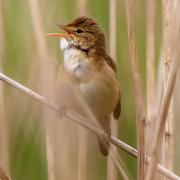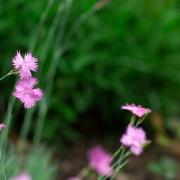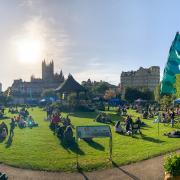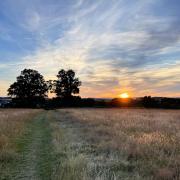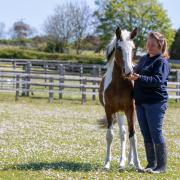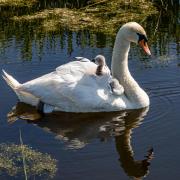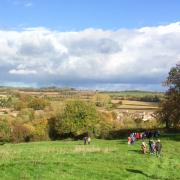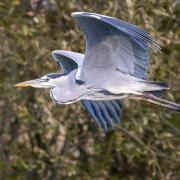The sparrows in our corner of West Somerset churr and chirrup with sudden scolding flurries from the viburnum this nippy morning.
The bush thrums with their sparrow-wings as they suddenly head off to the back gardens. Another songster chips away from its roof-corner perch on a gutter while six or seven peer out from the hawthorn, a favoured hide-out. There are about 30 in this colony and it seems to me they live the whole of their lives within a radius of about 150 metres.
Research has shown that passer domesticus, the house sparrow, is the most sedentary of all songbirds, preferring to forage within 50 metres of the nest and seldom going more than a kilometre from where it was born. Its relative, the tree sparrow, with a more chestnut head, is far rarer now, although there are a few in the east of the county.
There are several other sparrow colonies in the village. This is a far cry from years ago when agricultural practices were different and sparrow flocks were in the hundreds. What is certain is that sparrows are highly sociable: they deeply need and depend on each other. I am so pleased they are still about here to share our lives as they for millennia. Yet they are far scarcer in many cities and nearly all of London.
Max Nicholson, the doyen of British conservationists (he founded The World Wildlife Fund) began his survey of London sparrows in 1925. One November day in Kensington Gardens he counted 2,603. In December 1948 in the same place there were 885 birds. By November 1966 he tallied 642 and in November 1985 there were 544. In February 1995, at the age of 91, these had dwindled to 46 and on 5 November 2000, the 75th anniversary of his original count, only eight sparrows were found! An even more recent survey of Central London found none on the South Bank and only three birds in the whole of the West End. Do you remember those old photos of a man in a London park with sparrows perching in their hundreds on his head, shoulders and outstretched arms? It now seems a world away.
Many theories have been advanced, from benzene and MTBE in unleaded petrol to particulates in diesel, without a definitive conclusion being reached. But two key findings are that sparrow chicks need insect food like aphids for the first few days of their lives before moving on to grains and seeds and - because sparrows are so sedentary and require two or three broods a year to maintain population levels - once a colony starts to collapse it gives up because it has to live sociably.
A bit like us really. So let us celebrate the wonderful country sparrows, our Somerset piafs (French slang for a sparrow, hence the moniker of Paris’ most celebrated singer: tiny and irrepressible) who still find the insects here to feed their chicks.
‘His eye is on the sparrow’ says Matthew, as does the gospel song of that name, and Horatio tells Hamlet ‘there is a special providence in the fall of a sparrow’.
The Venerable Bede sees in the flight of a sparrow a metaphor for our earthly existence: ‘Like the swift flight of a sparrow through the mead-hall flying in at one door and out at another, while you sit in supper in winter and the fire blazes in the midst and the hall is warmed, but the wintry storms of rain or snow are raging abroad.’
May they live long and prosper, singing their sparrow tongue of Piaf’s La Vie en Rose as they gather post-prandially in the bushes or whirr off in madcap chases. Just the other day a cluster of them were dust-bathing in the road – what a life-enhancing bundle of existence they created, completely immersed in the moment as they strutted and fluttered wings with exultant sparrow-shouts of ‘We’re here because we’re here’!




